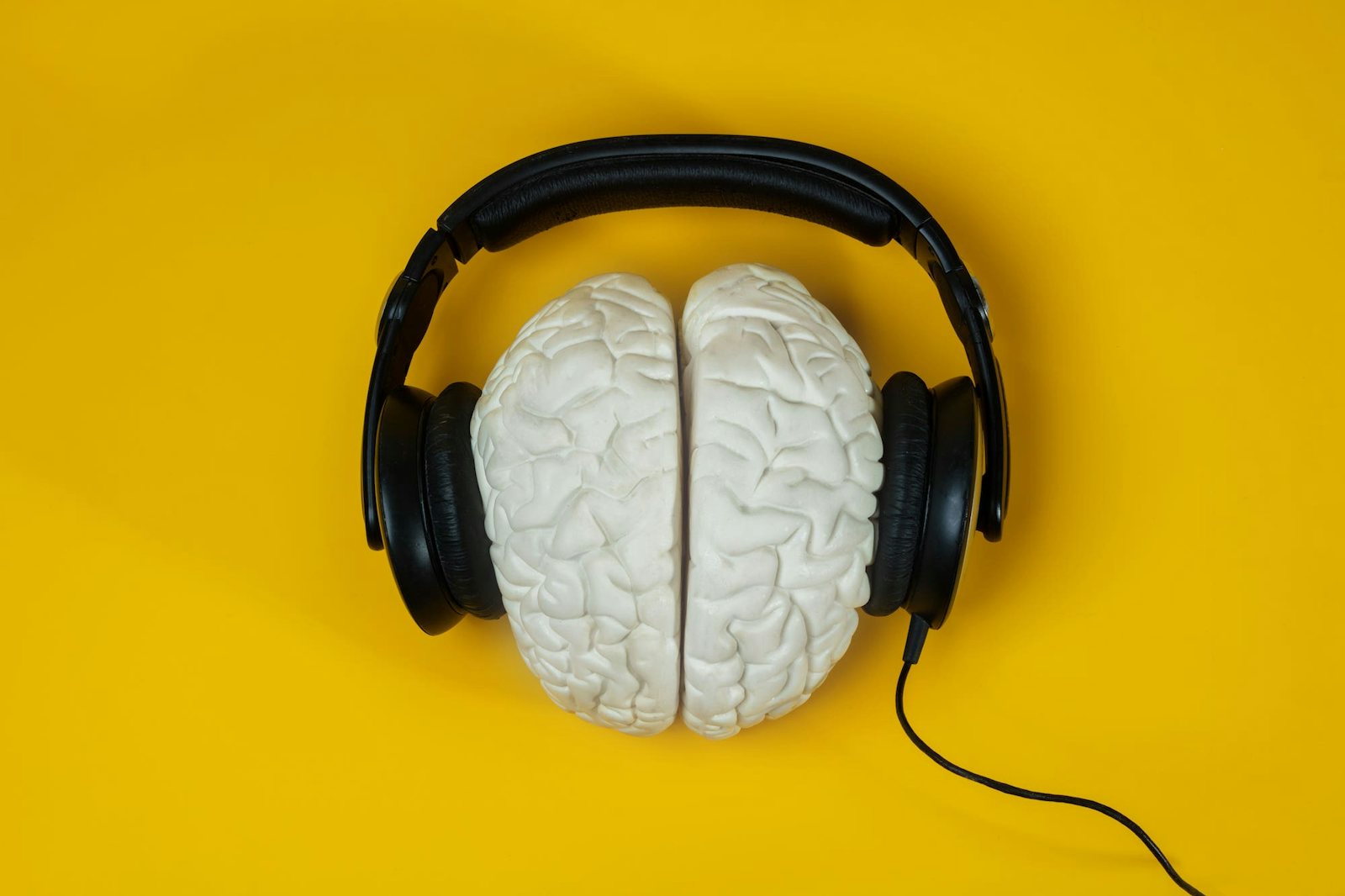It’s the year 2030, and you’re getting ready for your morning jog. You click on your running playlist and pop in your earbuds as you head out the door. But these wireless buds do much more than stream music. They can eavesdrop on your brainwaves, measure molecules in your ear sweat that offer clues to your health and physical performance, and even help improve your mental health.
At least, that’s the big idea. The brain-bud concept is the brainchild of a group of scientists at the University of California, San Diego. A first, experimental iteration of such earbuds already exists. The team described this novel device in a recent study, published in the journal Nature Biomedical Engineering. They expect this new wearable device could help scientists and patients remotely monitor stress and other cognitive states, provide early diagnoses of neurodegenerative diseases, and even channel neurofeedback, a technique that uses stimuli such as sounds to relay information about brain activity to help people improve attention and mood and reduce stress.
Because the ear canal is so close to the brain, these tiny buds can act as noninvasive “windows” into the mind, replacing the bulky and uncomfortable electrodes of the electroencephalogram machinery, or EEG, which is typically used to record brain activity in clinical settings. Not only are the buds less cumbersome, but they also allow for remote monitoring of brain waves in real-world settings and during physical activity. Most EEG is “not in a very wearable format,” explains Yuchen Xu, postdoctoral researcher at UC San Diego and an author on the paper. Measuring brain activity with EEG technology has historically required the wearer to sit motionless next to a giant machine. Though researchers have increasingly worked to design mobile EEG applications, many of these do not detect brain signals as well as traditional EEG.
The buds could measure levels of stress and focus.
To create their neuro-buds, researchers printed the tiny electrodes on a stretchable synthetic material, which they then wrapped around a run-of-the-mill earbud. When inserted into the ear canal, these neurobuds could sense the electrical activity of firing neurons during exercise, sleep, or work—for example as a person is trying to focus on a task or, say, running through an unfamiliar neighborhood. Because the ear canal contains sweat glands, the buds can also collect information about metabolites released in perspiration, which could be used to measure levels of stress or focus, to predict risk of seizure, to improve brain function and neuroplasticity, or to better diagnose and understand disorders of the brain and central nervous system, such as Alzheimer’s Disease, says Gert Cauwenberghs, an author on the paper and professor of bioengineering at UC San Diego, where he also co-directs the Institute for Neural Computation.
The researchers have already designed sensors for the earbuds that can detect lactate—an organic acid the body produces during exercise and normal metabolic activity, and that spikes before and during seizures, that is excreted in sweat. (Lactate monitoring has already been found to complement EEG recordings in detecting seizures.) They are also working on sensors that will measure important health-determining metabolites like glucose in ear sweat—currently, there are few non-invasive ways of measuring glucose.
The earbuds could also be equipped to play soothing tones or melodies in real time when they detect certain patterns of neural activity, to help people learn how to control their states of mind and calm themselves down. “So we’d get the data locally [in the earbud], we process the data and then play the sound locally also, which will drive the brain towards more desirable states,” explains Cauwenberghs.
One can imagine a future in which a person would pop such neuro-buds into their ears after a difficult conversation with a boss, or just generally after a long, hectic day to learn how to quiet their nerves. A student or researcher might slip them in when they sit down to begin a research project or study for a test to improve their focus. Or someone with epilepsy might wear them as they go about their day to get early warning of an oncoming seizure.
The ear has so much potential to help us understand and train the brain. If the eyes are said to be the proverbial window to the soul, perhaps our ears will be the new window to the mind. ![]()
Lead image: Sergey Novikov / Shutterstock




























